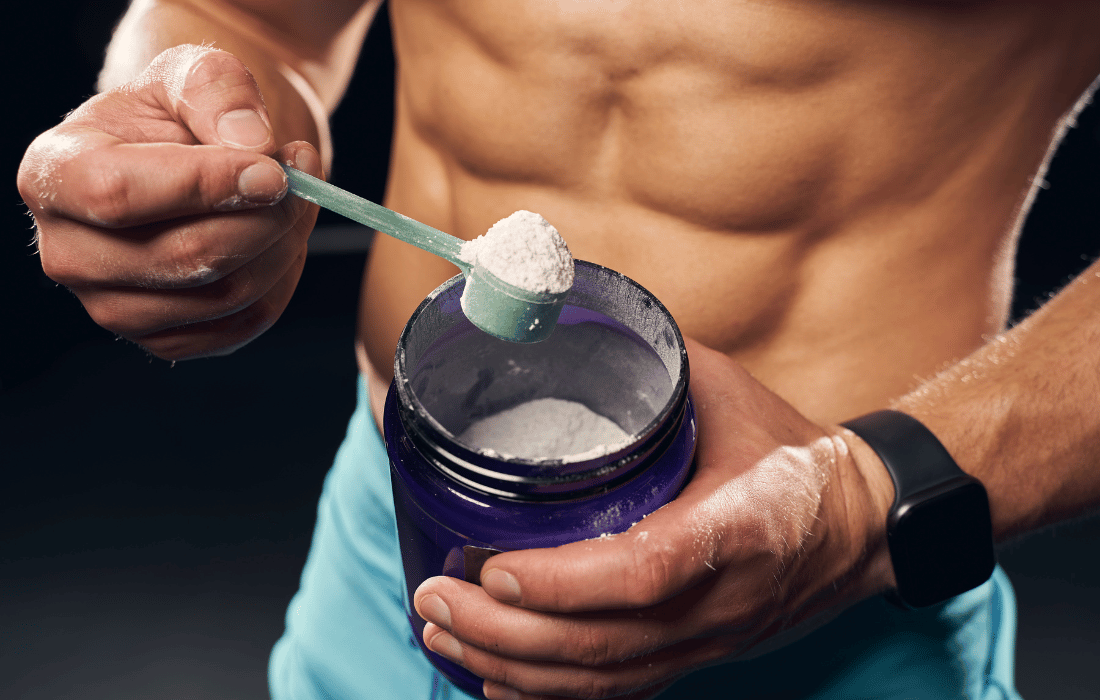If you’ve ever scooped a serving of protein powder into your shaker and thought, “I’m making a great health choice,” I hate to break it to you—there’s a decent chance you’re also ingesting lead, cadmium, arsenic, and BPA along with your post-workout gains.
That’s not fear-mongering; it’s just science. The Clean Label Project recently tested over 130 of the top-selling protein powders and found that nearly 75% contained measurable levels of lead, and a third of them exceeded federal safety standards for heavy metals. But it doesn’t stop at heavy metals—these powders are often laced with pesticides, microplastics, endocrine disruptors, and a cocktail of preservatives that are anything but anabolic.
So, let’s talk about it: what’s lurking in your protein powder, why the industry is failing to protect consumers, and how to actually get the protein your body needs without slowly poisoning yourself.
The Toxic Truth: What’s Really Inside Most Protein Powders?
Heavy Metals: The Unwanted Gains
Lead, cadmium, arsenic, and mercury have zero performance benefits, but protein powders seem to have plenty of them. The Clean Label Project’s findings were alarming, but here’s what’s even worse: plant-based protein powders were the most contaminated on average, with organic brands containing twice as many heavy metals as non-organic brands.
Why? Because plants absorb toxins from the soil they’re grown in. If the soil is contaminated, the protein source is contaminated. And unless brands rigorously test and reject raw materials with high toxicity levels (spoiler: most don’t), you’re getting a heavy metal shake with your pea protein.
This issue is exacerbated by the fact that many people mistakenly believe plant-based protein powders are the “clean” option. But the reality is that soil contamination, industrial runoff, and improper manufacturing processes are contributing to an epidemic of protein powders being laced with dangerous substances.
BPA & Endocrine Disruptors: Protein Powder or Testosterone Killer?
BPA (bisphenol A) was found in 5% of the protein powders tested, likely leaching from the packaging. This chemical is a known endocrine disruptor, meaning it messes with your hormones, potentially leading to insulin resistance, reduced testosterone, and metabolic dysfunction. If you’re taking protein powder to build muscle, boost recovery, or improve performance, but it’s laced with BPA, congratulations—you might be achieving the opposite.
Even more concerning is the presence of other endocrine disruptors like phthalates and PFAS, which are commonly found in plastics and food packaging. These chemicals are known to have long-term effects on fertility, thyroid function, and cognitive health, making them an even bigger problem for athletes looking to optimize performance.
Microplastics: Not the Kind of Protein Additive You Want
It’s no longer a conspiracy theory—microplastics are in everything, and protein powders are no exception. The supplement industry is notoriously unregulated, meaning many powders are packaged in plastic containers that leach microscopic plastic particles into the product. You’re not just supplementing protein—you’re supplementing plastic.
Recent studies showed that microplastics can disrupt gut health, increase inflammation, and contribute to cellular damage. Long-term exposure has also been linked to hormonal imbalances and potential carcinogenic effects. And yet, these products remain on store shelves, marketed as “health food.”
Preservatives and Artificial Fillers: The Dirty Secrets of Cheap Protein
Many mainstream protein powders are filled with artificial sweeteners, preservatives, and gums (like carrageenan, guar gum, and xanthan gum) that can cause digestive distress, inflammation, and even contribute to leaky gut syndrome.
And don’t even get me started on soy protein isolate—a heavily processed, often GMO-derived protein that also happens to contain phytoestrogens, compounds that can mess with hormone balance.
Not to mention, many protein powders lack the proper digestive enzymes needed to break down and absorb protein efficiently. This results in bloating, gas, and the infamous “protein farts” that everyone pretends to ignore at the gym.
The Real Problem: Protein Deficiency and the Marketing Machine
Here’s the irony: people genuinely need more protein. The average diet is already lacking in high-quality protein, and chronic protein deficiency is linked to muscle loss, insulin resistance, poor immune function, and hormonal imbalances (as I covered in detail in this article).
So, we have a paradox: on one hand, people need more protein, and on the other, protein powders are loaded with toxic junk that sabotages health. The industry’s response? Slap some trendy words like “organic,” “plant-based,” or “grass-fed” on the label and call it a day.
The War Against Real Food
The protein powder industry thrives on convenience, but what people don’t realize is that real, whole-food protein sources are vastly superior. The narrative has shifted from eating steaks and eggs to relying on ultra-processed shakes and bars.
The Best Sources of Clean Protein
Since protein powders have become a nutritional minefield, what’s the best way to meet your protein needs without heavy metals and microplastics?
1. Grass-Fed & Grass-Finished Meat
The gold standard for bioavailable protein. It’s complete, nutrient-dense, and free of the contamination risks found in processed powders.
2. Pasture-Raised Eggs
Eggs provide one of the most perfect amino acid profiles available. Plus, they contain essential fats and vitamins like choline and B12 that support muscle growth and brain function.
3. Wild-Caught Fish
Salmon, sardines, and mackerel provide high-quality protein with omega-3s that combat inflammation and promote recovery.
4. Raw Dairy
Raw milk, cheese, and yogurt (if you tolerate dairy) are incredibly nutrient-dense sources of protein, packed with natural probiotics and enzymes that improve digestion and absorption.
5. Bone Broth & Collagen
Bone broth delivers gelatin, collagen, and easily digestible protein, plus it’s excellent for gut health and joint recovery.
6. High-Quality Protein Supplements (Rare but Possible)
If you absolutely need a protein powder, look for third-party tested options that screen for heavy metals, BPA, and other contaminants.
Lineage Provisions: The Gold Standard of Clean Protein

For those who still want the convenience of a protein powder but refuse to compromise on quality, Lineage Provisions’ AB Complete is a game-changer. This is not your typical protein supplement—it’s a 100% grass-fed, grass-finished beef protein that prioritizes nutrient density and bioavailability over flashy marketing claims.
Why Lineage Provisions Stands Out
Nose-to-Tail Nutrition – Unlike traditional protein powders that isolate muscle meat, AB Complete includes nutrient-rich organs like heart, liver, kidney, and pancreas, ensuring a complete amino acid profile.
No Heavy Metals, No Fillers – Third-party tested for purity, completely free from cadmium, lead, arsenic, and synthetic additives.
Collagen and Colostrum Included – Naturally supports gut health, joint repair, and immune function with bioavailable peptides and immune-boosting factors.
Truly Transparent Labeling – No proprietary blends or hidden ingredients—what you see is what you get.
If you’re looking for a protein powder that actually enhances performance, recovery, and longevity, Lineage Provisions is your best bet. It’s clean, effective, and backed by real nutrition science—not gimmicks.
Final Thoughts: Rethink Your Protein Source
If you’re serious about performance, longevity, and not ingesting lead like it’s a pre-workout supplement, then it’s time to rethink the protein sources in your diet.
Whole foods will always be superior to powders, and if you do go the supplement route, do your homework. Ask brands for third-party lab results, scrutinize ingredients, and remember—just because something is sold as “health food” doesn’t mean it’s healthy.
Because the last thing you want when you’re optimizing protein intake is a side order of cadmium.










